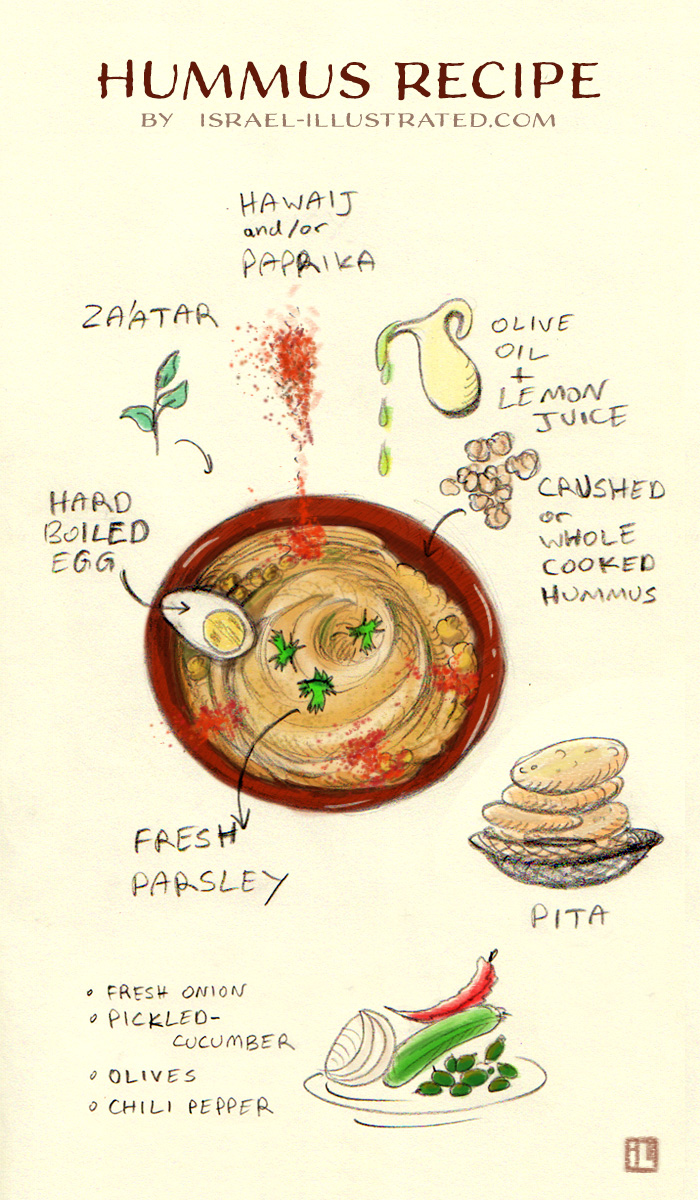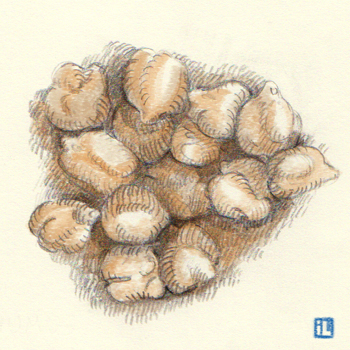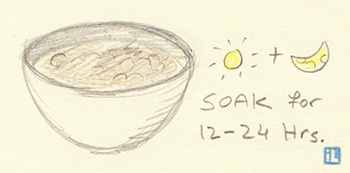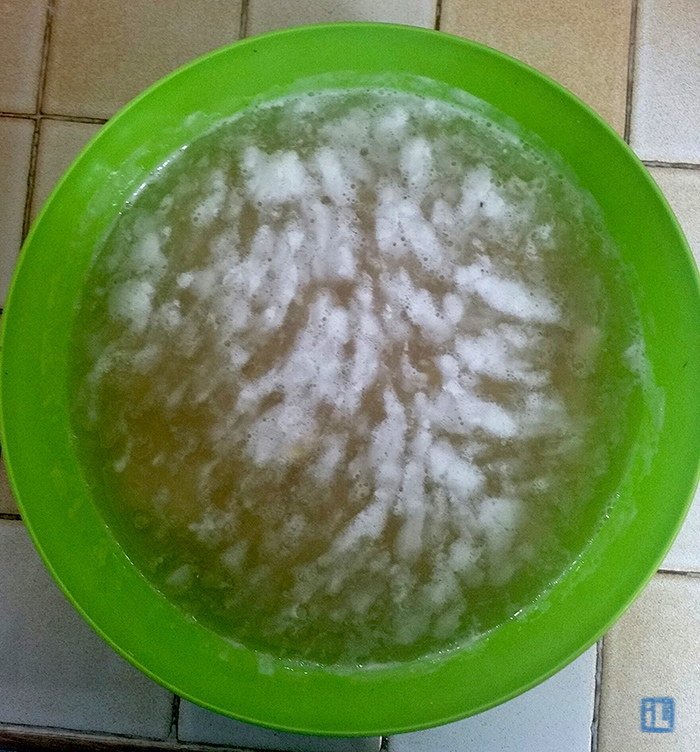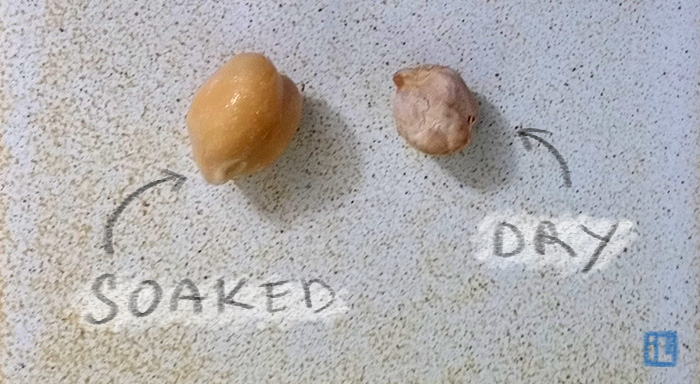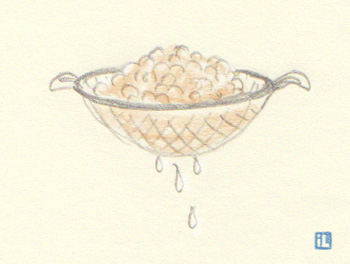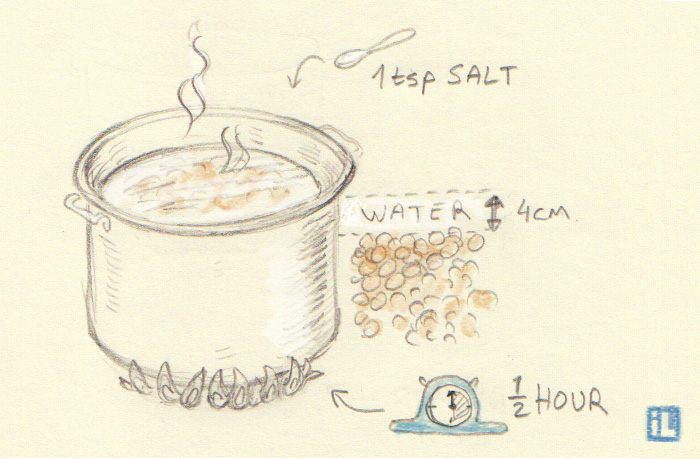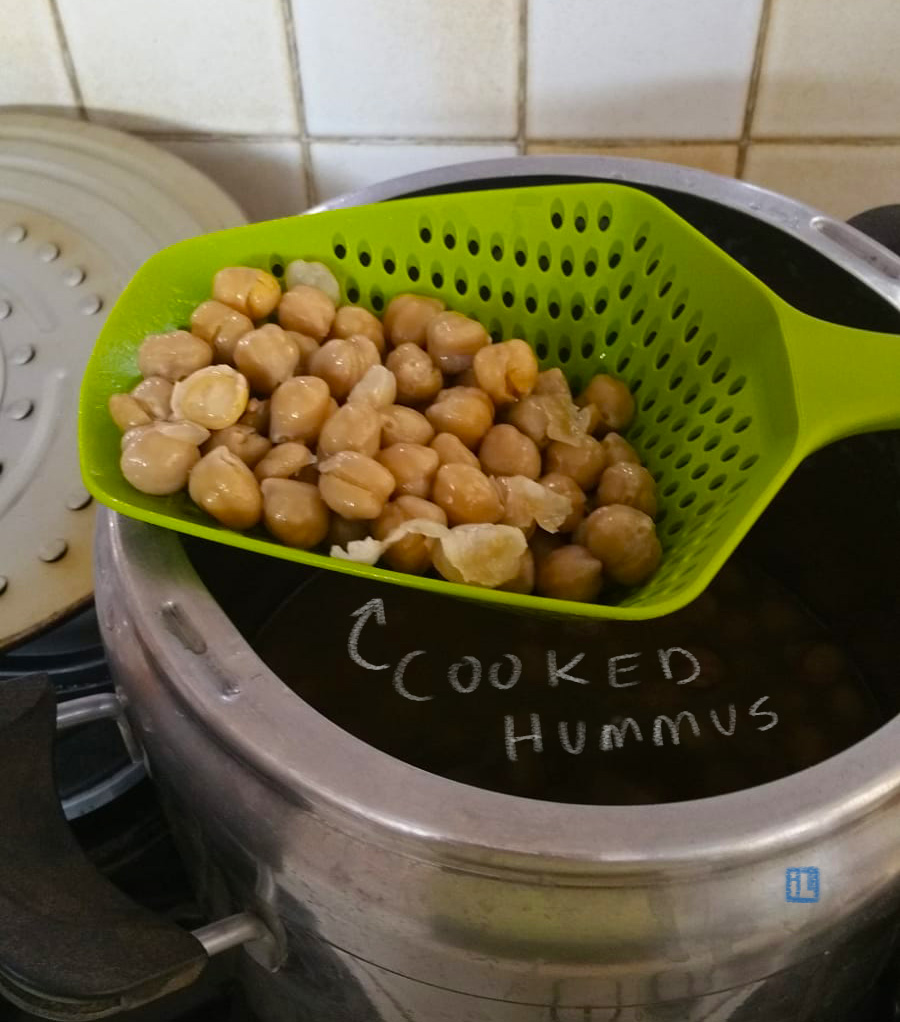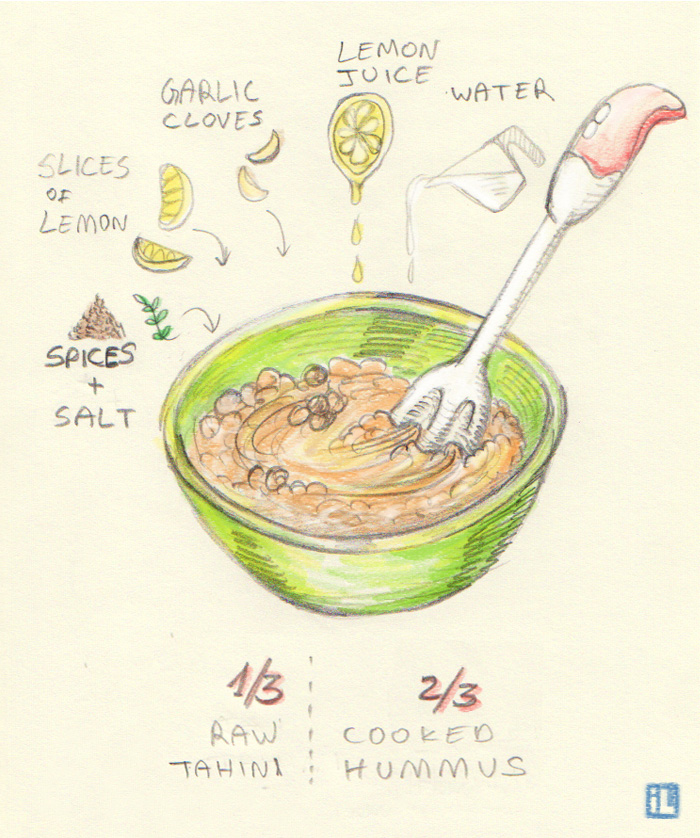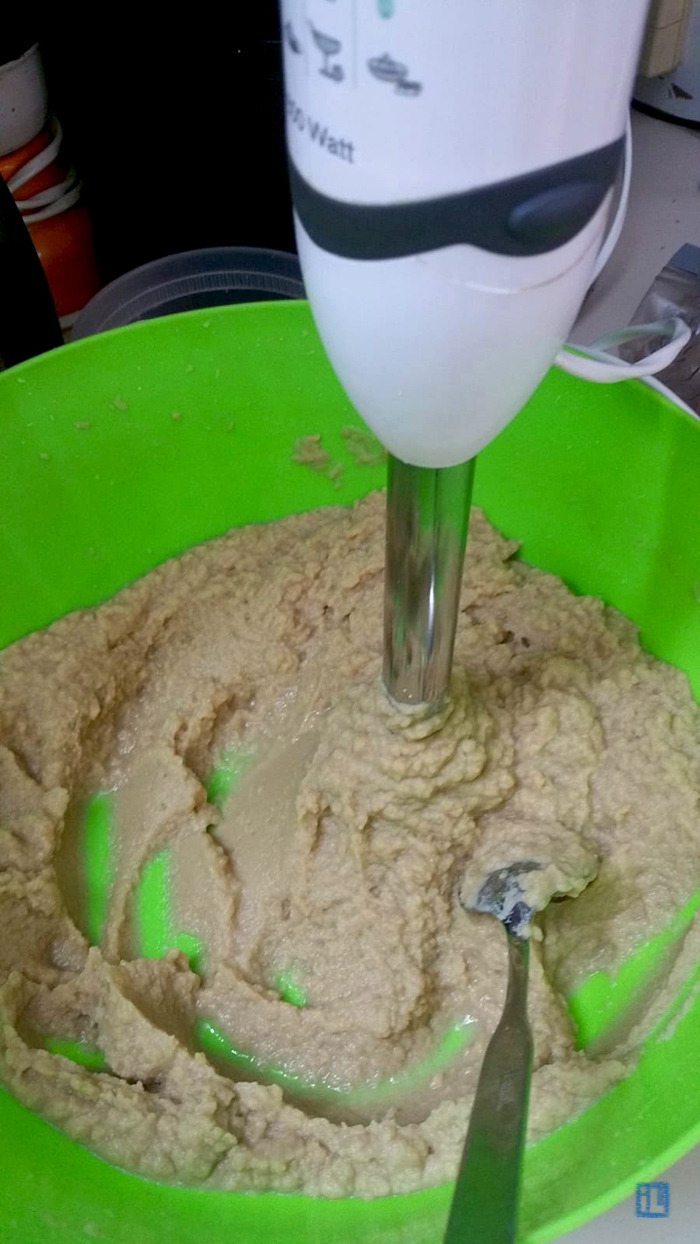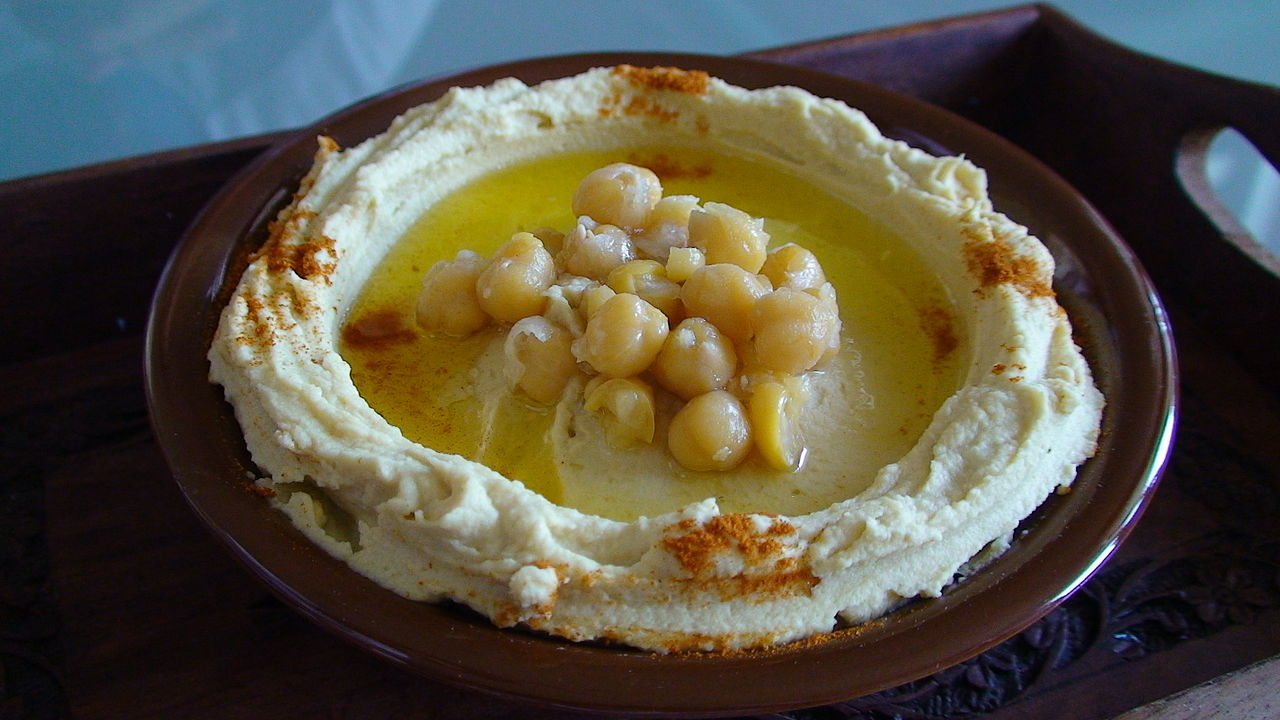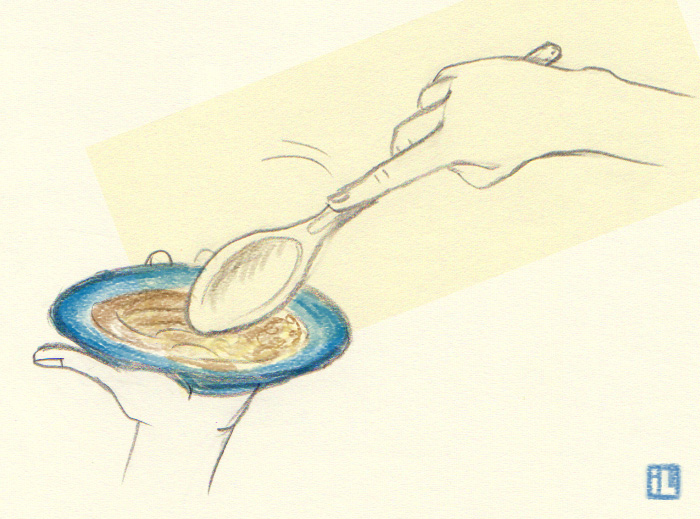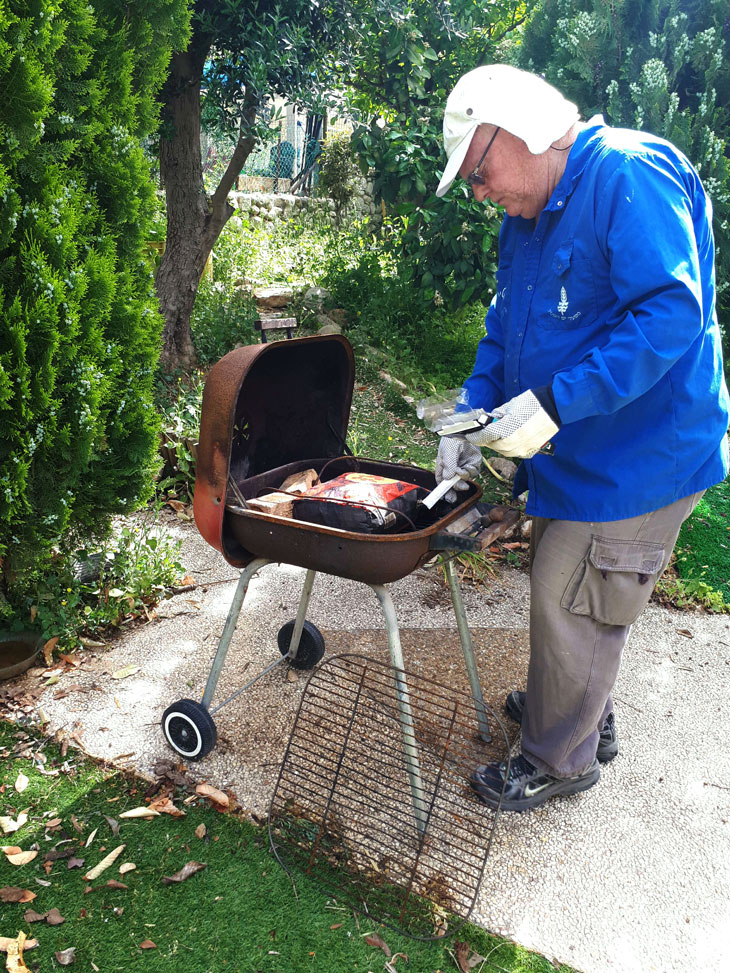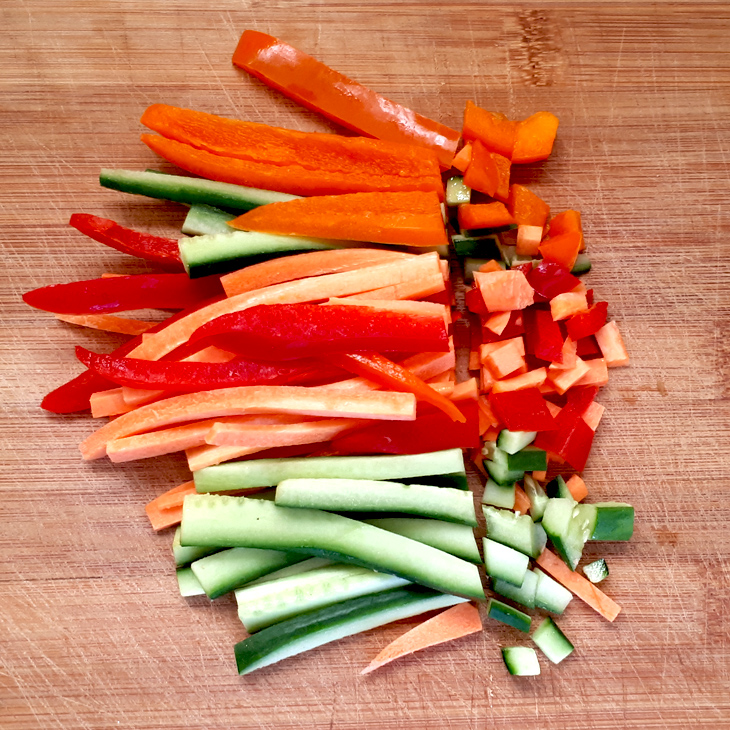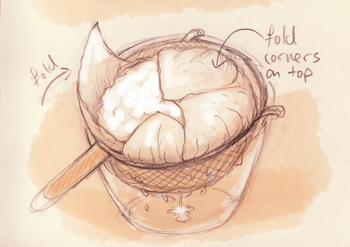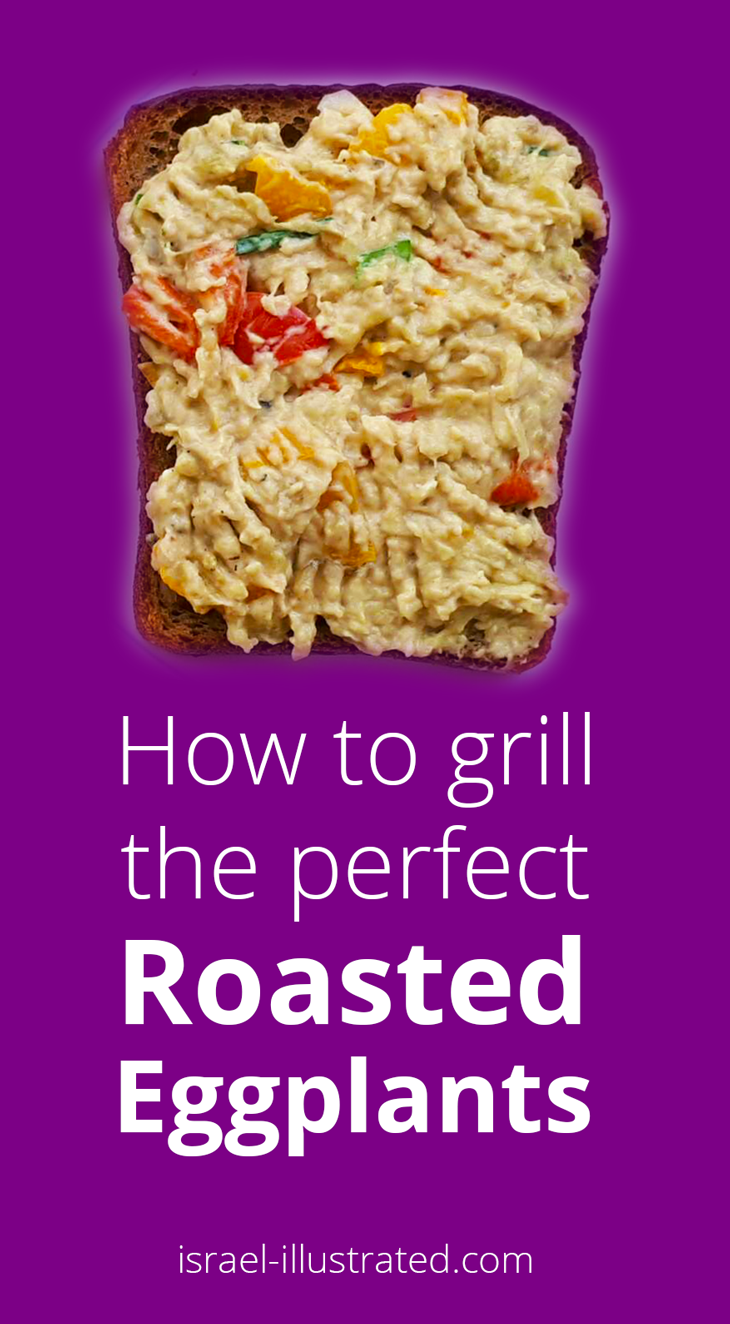Homemade Hummus Recipe
by Zvika, translated and illustrated by Netta
Hi everyone! As promised, here is the step by step recipe for making Hummus, a basic staple of the Israeli kitchen.
I've arrived at this recipe after years of studying, spying, trial and error and traveling the inner works of the Jerusalem kitchen, with some recent additions from the internet.
A note about the ingredients:
I don't give exact quantities up front, and the reason shall present itself shortly. You must experience the taste as you go along. If the taster likes the taste, it's safe to assume everyone else will like it.
Ingredients
The Basics:
- Hummus – dried, fresh or frozen
- Raw Tahini (Tchina)
- Water
- Salt
- Lemon, sliced
- Lemon juice
- Baking Soda (NaHCO3)
Spices:
- Turmeric
- Hawaij
- Cumin
- Za'atar – fresh if you can get it, or dried.
- Parsley
- A few cloves of garlic
Oils (optional):
- Sesame oil
- Black Cumin oil
For the Serving Suggestions:
- A shallow bowl, or a plate with raised edges
- Pita Bread
- Olive oil
- Lemon juice
- Paprika – sweet or spicy
- Pickles – cucumbers, cabbage, carrots and any other pickles you like
- Olives
- Live onion, sliced into quarters
- Chili pepper
- Hard-boiled egg
- Prepared Tahini sauce (not to be confused with the raw tahini that is a part of the hummus recipe)
Hummus Recipe Step by Step
Step 1 – Soak the Chickpeas
The size of the raw Hummus peas is not important.
First, make sure there are no stones hiding in the chickpeas.
Dried Hummus requires 12 to 24 hours of soaking in water:
Cover the Hummus in water with enough to spare to make sure the peas will remain covered throughout the soaking process.
A light foam appears over the surface.
Do not worry! It's the hummus that's alive and breathing.
When done soaking:
Strain the chickpeas and rinse them well in water.
Throw away the light brown colored water that remain from the soaking.
Step 2 – Cooking the Hummus
- Put the rinsed hummus in a large pot and cover with fresh water.
- Make sure you have at least a few extra centimeters of water covering the peas.
- Add a teaspoon of salt to the pot.
Boil on a high flame and mix lightly to spread the heat evenly throughout the pot.
- Set timer to 30 minutes: When the entire pot boils, set a timer for half an hour, and lower the fire to a moderate boiling.
After half an hour:
- Mix the pot and top up the water. There must not be any exposed hummus, and the water should turn a light yellow.
- Add 1 tsp of Turmeric, because it's good for you, and 1 tsp of Hawaij because it's tasty.
- Set the timer and boil the pot for another 30 minutes.
After one hour all in all, carefully taste the hummus:
If it still tastes grainy and feels like flour in your mouth, it's not cooked enough yet.
If not cooked – top up the water again, making sure the chickpeas are covered, and set the timer for another half an hour.
When cooked, now a trick:
- Very carefully, while boiling and constantly stirring, add a flat tsp of baking soda.
A huge foam will build up – stir continuously and be careful not to let the pot flow over.
- Cook for another 2-3 minutes, and taste.
If the hummus melts creamily in your mouth, with no grainy texture, then it's time to turn off the stove.
- If not, cook for another 10 minutes, then turn off the stove.
- Strain the hummus well and let it cool down.
Step 3 - How to Grind the Hummus
The classic methods are using a crater and Pestle. Slightly newer is the meat grinder.
We will use a hand-held stick blender.
** You might want to set aside a bit of whole chickpeas for later, for serving.
- Put the cooked hummus in a large sturdy bowl.
- Prepare some water in easy to pour cup, that allows you to pour water gently into the mix.
- Start the blender and start grinding the hummus.
- When it becomes a hard paste, add a little water and keep grinding.
Keep grinding and start adding ingredients:
- A couple of garlic cloves
- Add some lemon juice, to counteract the basic Ph of the soda.
- Add slices of lemon (no stones!), or even pickled lemon, salt, turmeric, zaatar, fresh parsley (Netta here - You might want to stop and think about the parsley- not everyone likes it and it changes the color of the humus!)
Taste it!
Keep mashing, adding spicing and tasting.
Grind and add liquids until all the chickpeas are completely mashed into a thick paste.
Step 4 – Adding Tahini and Polishing
Now we add the raw tahini.
- Keep the blender going and start slowly adding raw tahini.
- You must add more water, lemon juice and salt as you go, to balance the taste as it changes.
- You can now add a bit of sesame oil and black cumin oil to improve the taste if you like them.
- Keep tasting and fixing!
Hummus at good Jerusalem level, where I got this education, must contain at least 30% raw tahini - no less!
Keep grinding, mixing and fixing until you are happy with the taste.
When you like it – that's it, it's done!
Step 5 – Serving Your Homemade Hummus
Rule of thumb – Hummus should be served at room temperature.
- Get a shallow bowl, or a small plate with raised edges.
- With a spoon, load the plate with a spoon or two of hummus.
- Now this takes a bit of practice:
Hold the plate on the flat of your hand, and with the back of the spoon, spread the paste around the plate, pushing toward the edges.
The goal is to make a little crater of hummus, so you can put olive oil and other things in the middle.
Hummus Serving suggestions:
- In the little hummus crater you made, pour olive oil and a bit of lemon juice.
- Sprinkle paprika on the rim, and other spices such as Hawaij, Zaatar, or anything else you like.
- If you saved a bit whole hummus before grinding it, put a little pile of peas in the middle, and douse them in olive oil and lemon juice.
- Decorate with a few leaves of fresh parsley.
Popular additions:
- A hard-boiled egg, sliced to moon shapes or cut in halves.
- Minced meat dish
- Broad beans dish (Hummus-full)
- A pool of prepared Tahini sauce (ḥummuṣ bi ṭaḥīna)
How to eat hummus with pita:
The everlasting companion of hummus is a pile of fluffy pita bread.
We eat hummus with our hands: Tear off a bit of pita, and bunch up some hummus from your plate.
Also popular:
Olives, pickles, slices of live onion (can be used to scoop up hummus as a kind of spoon), chili pepper.
Hummus goes well with lemonade, preferably with some mint leaves in it, or sage tea.
For desert – a shot of Turkish coffee, and a finger of sweet baklava.
Hummus Making Troubleshooting
- If the paste is too thin because of too much water, you can fix it by adding more raw tahini. Add tahini and fix the spicing accordingly.
- If you kept your hummus in the fridge and it solidified, you can fix it by adding water or lemon juice and spices to balance the taste.
- If the hummus stood in the fridge for a few days, it might start fermenting. In this case, it's best to carefully add a bit of water, and cook it for five minutes in a pot or in the microwave oven. Cook until the taste goes back to what it was.
- You can freeze the hummus you made.
After de-frosting, follow tip no. 3 to revive it. Add some raw tahini and spices to fix the taste.
Enjoy!
Follow Me on Instagram:
https://www.instagram.com/nettacanfi/
